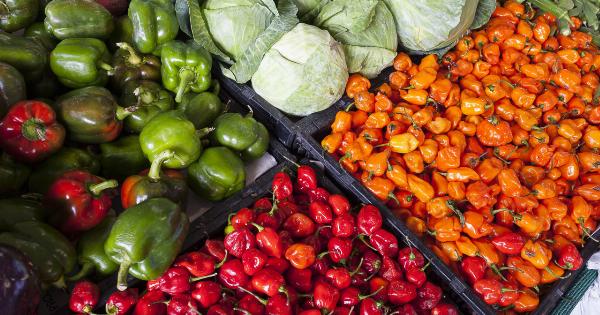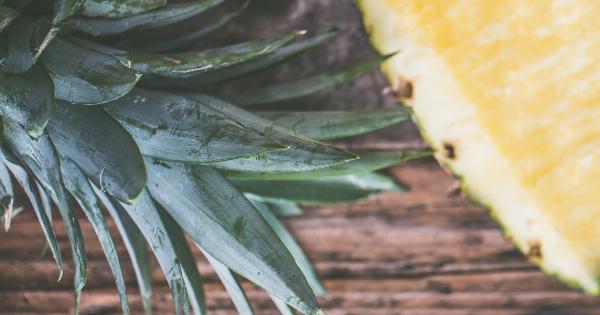Fruits and cabbage are some of the most essential foods in maintaining a healthy diet. However, they can also be some of the most expensive items in your grocery budget.
With a little bit of planning and some careful shopping, you can save money on these healthy foods without sacrificing quality or taste. Below are 30 ways to save money on fruit and cabbage so you can stay healthy without breaking the bank.
1. Buy in Season
One of the best ways to save money on fruit and cabbage is to buy them when they are in season. Seasonal produce is typically less expensive because it is abundant and doesn’t require as much transportation or storage.
Check your local grocery store or farmer’s market to find the freshest and most affordable produce.
2. Shop Around
Compare prices at different grocery stores and markets to find the best deals. Don’t be afraid to try new stores or outlets to see where you can find the best produce prices. Also, consider buying in bulk for even greater savings.
3. Join a CSA
A Community-Supported Agriculture (CSA) program allows you to purchase a share of a farmer’s crops. In return, you receive a portion of the harvest throughout the growing season.
This is a great way to get fresh, local produce at an affordable price.
4. Grow Your Own
If you have space, try growing your own fruit and cabbage. This can be a fun and rewarding way to save money while also enjoying fresh produce. You can also try container gardening on a patio or balcony.
5. Freeze and Preserve
When you have access to inexpensive fruit and cabbage, consider freezing or preserving them for later use. This is a great way to enjoy your favorite produce year-round without paying premium prices.
6. Buy Frozen
Frozen fruits and veggies are often less expensive than fresh produce and can be just as nutritious. Look for deals on frozen fruit and cabbage to stock up and save.
7. Shop Discount Stores
Discount grocers and dollar stores often offer lower prices on produce, including fruit and cabbage. Check out these stores for deals on your favorite produce.
8. Don’t Be Fooled by Organic
While organic produce may have health benefits, it’s often more expensive than conventionally-grown produce.
If you’re on a budget, prioritize buying organic versions of the “dirty dozen” (produce with the highest levels of pesticide residue) and buy conventionally-grown versions of the “clean fifteen” (produce with the lowest levels of pesticide residue).
9. Use Coupons and Rebates
Check online and in-store for coupons and rebates on fruit and cabbage. Many stores offer digital or paper coupons, and rebate apps like Ibotta and Checkout 51 can help you save even more.
10. Buy Day-Old Bread
If you enjoy making fruit salads or coleslaw, consider using day-old bread to make your own croutons. Many grocery stores offer discounted breads that can be used in other recipes or as a side dish.
11. Visit Ethnic Markets
Ethnic markets often offer lower prices on produce that’s common in the cuisines they serve. If you’re looking for a specific type of fruit or cabbage, check out an ethnic market to see if you can find it for less.
12. Choose Canned and Dried
Canned and dried fruits and veggies can be just as nutritious as fresh versions, and they often have a much longer shelf life. Consider adding canned or dried fruits and veggies to your pantry for quick and easy meals or snacks.
13. Get Creative with Your Meals
Try mixing and matching fruits and cabbage in your meals to create new flavor combinations. This can help you use up produce that might otherwise go to waste, and it can also help you save money by using what you already have on hand.
14. Shop Bulk Bins
Bulk bins are a great way to buy just the amount you need and save money in the process. Look for bulk bins of dried fruits, nuts, and seeds, as well as dried and canned beans and legumes.
15. Use Loyalty Programs
Many grocery stores offer loyalty programs that can help you earn points or cash back on your purchases. Sign up for loyalty programs at your favorite stores to save money on future purchases.
16. Stick to the Essentials
When buying fruit and cabbage, stick to the essentials and skip the fancy varieties. Basic apples, oranges, bananas, and cabbage varieties are often less expensive and just as nutritious as their more expensive counterparts.
17. Make Your Own Juice
If you enjoy drinking fruit juice, consider making your own at home to save money. You can use a juicer or a blender to make fresh juices that are packed with nutrients and flavor.
18. Use Leftovers in New Ways
If you have leftover cabbage or fruit, consider using them in new ways. Add leftover fruit to smoothies or oatmeal, or use cabbage in stir-fries or salads. This can help you save money by using up what you already have on hand.
19. Choose Store Brands
Store brands are often less expensive than name-brand products and can be just as good. Try store-brand versions of your favorite fruits and veggies to save money without sacrificing quality.
20. Buy Pre-Cut and Pre-Washed
If you’re pressed for time, consider buying pre-cut and pre-washed fruits and veggies. While these products can be more expensive, they can also save you time and energy in the kitchen.
21. Plan Your Meals
Plan your meals ahead of time to avoid wasting food and money. By knowing what you’ll be cooking and eating throughout the week, you can buy only what you need and avoid impulse purchases.
22. Buy in Bulk
Buy in bulk to save money on your favorite fruits and veggies. Look for bulk purchases of frozen fruits and veggies, as well as fresh produce that can be stored or preserved for later use.
23. Purchase Reduced-Price Produce
Many grocery stores offer reduced-price produce that’s still perfectly good but needs to be used or sold quickly. Look for these deals to save money on fresh fruits and veggies.
24. Buy Store-Brand Frozen
Store-brand frozen fruits and veggies can be less expensive than name-brand versions and can be just as good. Look for store-brand frozen produce to save money while still enjoying the convenience of frozen foods.
25. Use Cash-Back Apps
Use cash-back apps like Ibotta and Checkout 51 to save money on fruit and veggies. These apps offer cash back for certain purchases at specific stores.
26. Buy Unprocessed
If possible, buy unprocessed fruits and veggies rather than pre-packaged or pre-cooked versions. These products are often less expensive and don’t contain added preservatives or sodium.
27. Visit a Farmer’s Market
Visit a farmer’s market to get fresh, local produce at an affordable price. Many farmers offer lower prices at markets than they do at grocery stores, and you can also meet the farmers and learn more about how your food is grown.
28. Try Meatless Meals
Meat is often one of the most expensive items in a grocery budget. Try incorporating more meatless meals into your diet to save money. You can use fruit and cabbage in salads, soups, and stir-fries as the base for a delicious and filling meal.
29. Avoid Waste
Avoid wasting produce by using it up before it goes bad. Store fruits and veggies properly to extend their shelf life, and use leftover pulp or scraps to make homemade broth or compost.
30. Choose Non-Traditional Sources
If you’re looking for a specific type of fruit or cabbage, try non-traditional sources like a local co-op or online grocer. These sources may have lower prices due to smaller overhead costs or special deals with suppliers.































